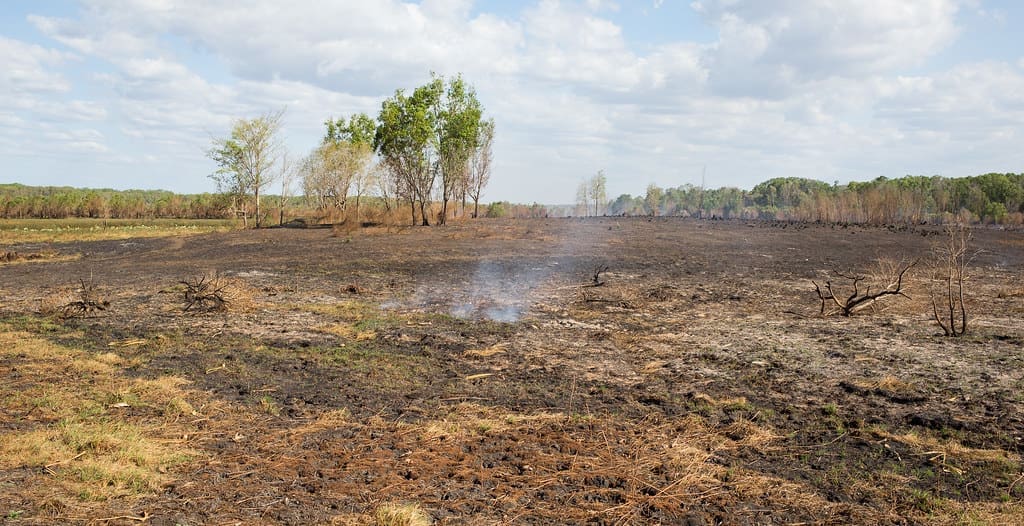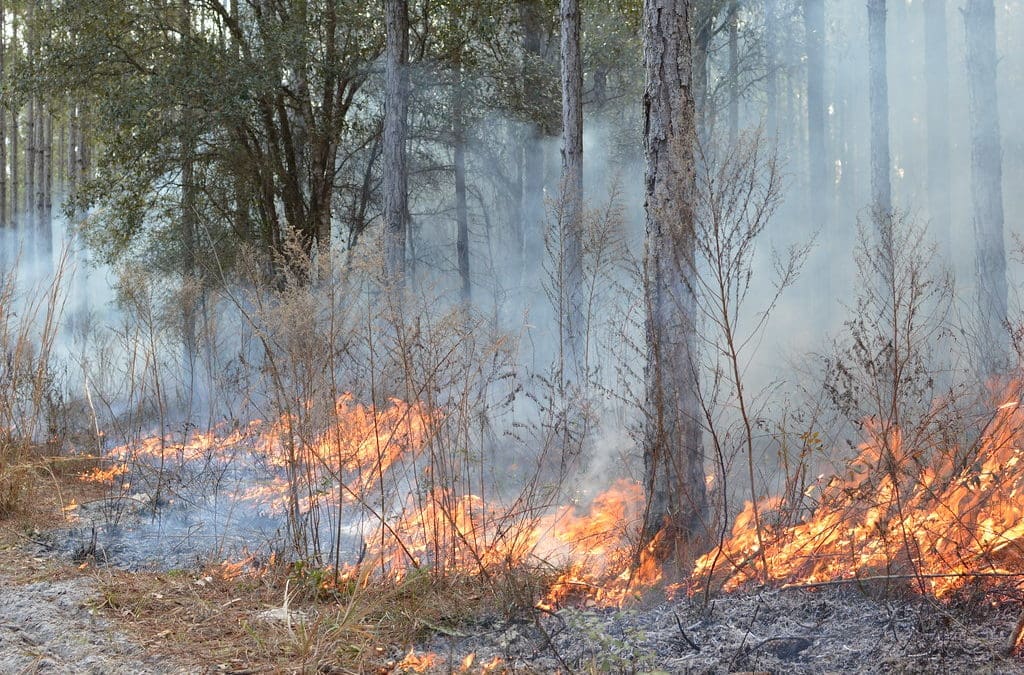| It seems that summer is finally here in Western Washington. Time for road trips, camping in the woods, and swimming outside!It also means that it is time to take extra care around all situations of potential risk of starting wildland fires. Last year wildland fires burned over 7 million acres in the U.S. alone, with the majority being in the western region of the country. You might not assume that wetlands are at high risk for fire, but many wetlands experience seasonal dry periods, times when they are vulnerable to fire. Bogs are no exception to this. On the contrary, bogs are chock full of highly flammable material called peat, the partially decomposed remains of moss and plants. In fact, peat is so good at burning that, in many parts of the world where bogs are common, but trees are not, people cut blocks of it to burn as a source of fuel in the home. In New England during the 1800’s, it became a business to harvest peat, and then compress it into cakes that fit inside stoves in the kitchen. When it comes to wildfires though, a fire in the bog is a big problem. Bog fires are classified as smoldering fires, because they are low temperature, slow moving, and often flameless. They can produce large amounts of smoke, as was seen in the devastating 1997-98 forest fires in Indonesia caused, in part, by the draining of the peatlands underlying the forests. |

| The behavior of bog fires is poorly understood relative to the combustion fires we are more familiar with above ground. Once started, the fire can travel underground, sometimes undetectably, and then catch fire to a tree root and burn up into the tree which then falls and ignites the bog in more places. Great volumes of water can be used on even a small area to little or no effect, making control difficult to impossible. Bogs are most vulnerable to fire during the dry season. In SHADOW’s area of the Pacific Northwest, climate change is expected to change rainfall patterns in two major ways during the next fifty to one hundred years. We will receive more rainfall annually, but over a shorter period, meaning that the dry season will be longer. Large volumes of carbon are stored in peatlands; more than any other terrestrial system! When wildfires burn peatlands or they are harvested for fuel or horticultural uses (the other major use of peat), the stored carbon is released into the atmosphere. This creates a feedback loop that will accelerate the loss of peatlands if left unchecked. We hope you have fun in the glorious sunny weather while it is here, but be fire-wise and take care! |



Recent Comments